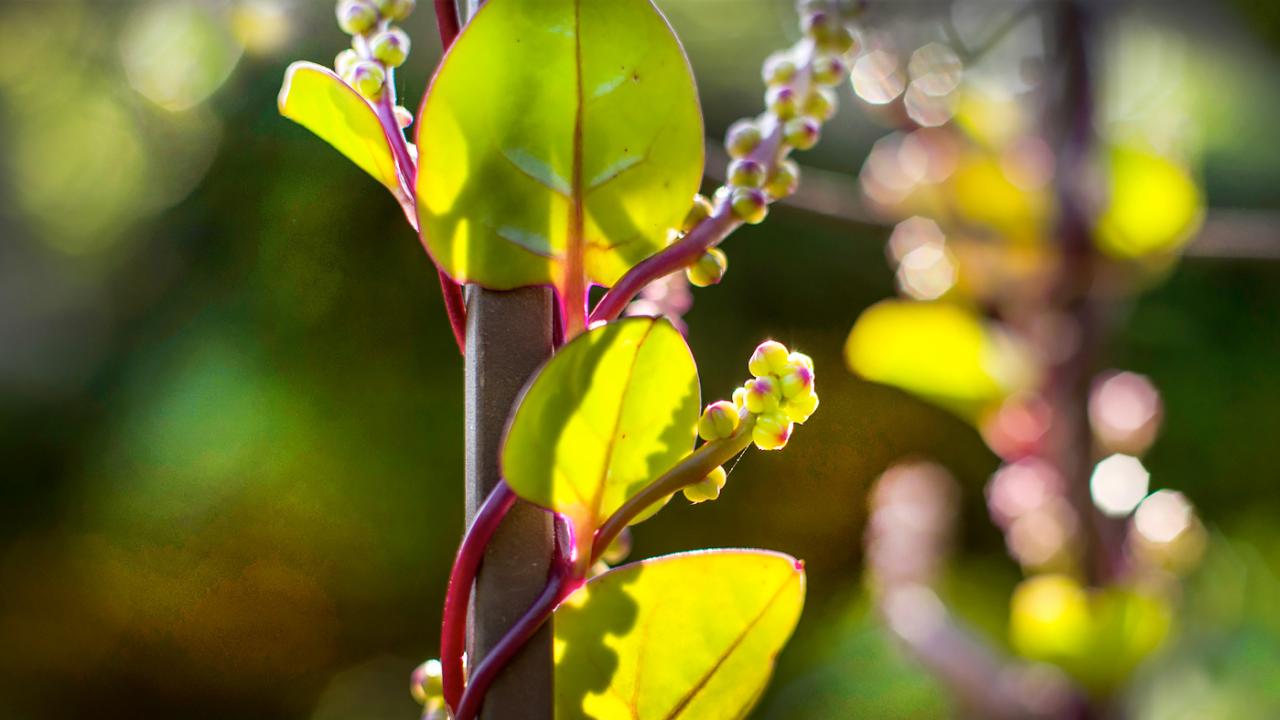

Plants &
Gardening
Garden Stories
Sunshine and titan arum relatives at the Garden
Sunshine is the latest corpse flower at the Chicago Botanic Garden to bloom.
A member of the Aroid plant family (Araceae) from Sumatra, it has a number of titan arum relatives at the Garden from around the world.

Sunshine the titan arum (Amorphophallus titanum) in the Sensory Garden
Jack-in-the-Pulpit (Arisaema triphyllum) and Skunk Cabbage (Symplocarpus foetidus) are the two most common Chicago natives in this family. Other relatives hail from continents, regions, countries, and islands. Taxa growing at the Garden have the following native ranges: North America, northeastern United States and Canada, Japan, Korea, China, Thailand, Russian far east, Kamchatka Island, Sakalin Island, the Philippines, Indonesia, Sumatra, Sri Lanka, Turkey, Greece, Republic of Georgia, Spain, Italy, India, Nepal, Afghanistan, Tibet, Burma, Himalayan Mountains, Yemen, Mexico, Central America, Panama, Guatemala, Caribbean Islands, South America, Colombia, Peru, South Africa, and Lesotho.
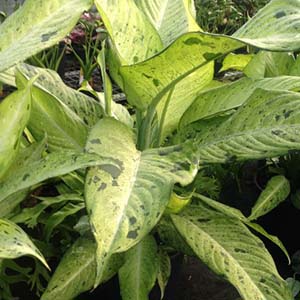
Jack-in-the-pulpit (Arisaema triphyllum)
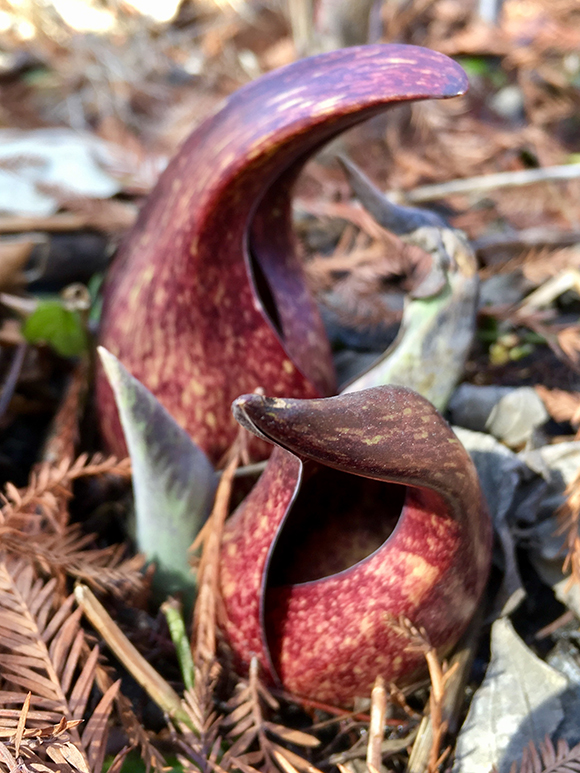
Skunk cabbage (Symplocarpus foetidus)
Photo by Jacob Burns
Not only is it widespread, the members are also adapted to a number of environments from hot, humid Sumatra rainforests that Sunshine calls home to cold, temperate, deciduous forests; temperate and tropical wetlands; Mediterranean climates; and deserts.
The Araceae is one of the larger plant families, containing 117 different genera. The Garden features 27 of those genera containing 152 species and cultivars. Our GardenGuide smartphone app features the locations where Sunshine’s family can be seen throughout the Garden. Many are grown ornamentally for their attractive leaf shape (philodendrons, anthuriums) and colorations (elephant ears, caladiums, dieffenbachia, pothos, taro) while others—anthuriums and calla lilies chief among them—are grown for their attractive flowers. While not all members of the family smell bad—the calla lily, for instance, has a light citrus fragrance and anthuriums don’t have any fragrance at all—many are real stinkers with common names like dead horse arum, dead mouse arum, and corpse flower.
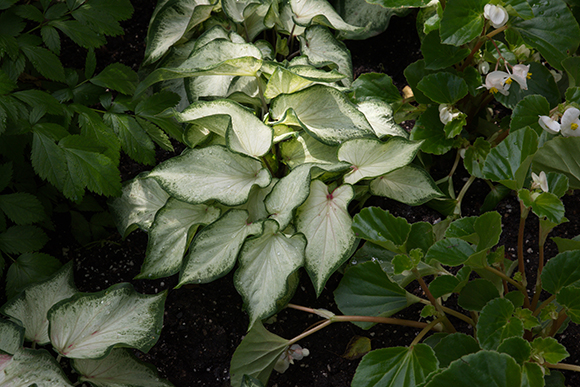
White Dynasty caladium (Caladium bicolor) ‘White Dynasty’

Calla lily (Zantedeschia aetiopica)
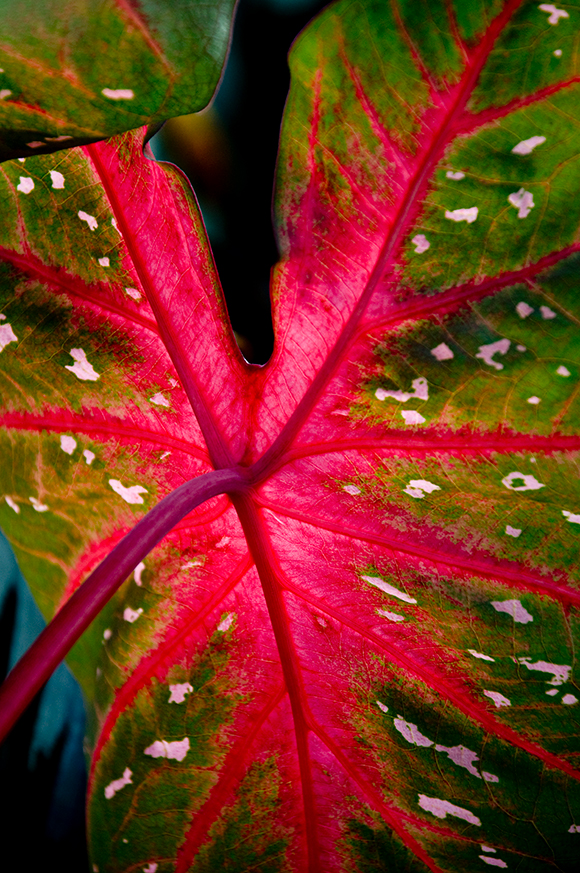
Red Flash elephant ear (Caladium ‘Red Flash’)
Most members of the family contain a number of compounds (often including calcium oxylate crystals) in their sap to deter herbivores that illicit a mechanical gag reflex in people. Calcium oxylate crystals look like glass shards on steroids under a microscope and play havoc with the soft tissues of the inside of the mouth, tongue, and throat. The most notable food crop in this family? Taro, or poi. Preparation of the starchy tubers have adapted techniques over the centuries that remove the toxic compounds.
Ready for an Aroid treasure hunt?
Find these titan arum relatives as you stroll the Tropical Greenhouse, where a titan arum leaf is also housed. Can you spot the family resemblance?
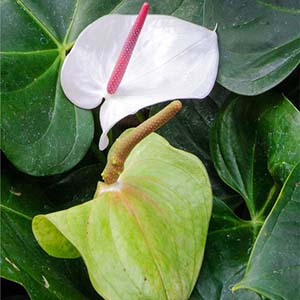
Flamingo flower (Anthurium andraeanum ‘White Heart’) is a classic anthurium flower of the florist trade in white with a red spadix; find it near the east entrance.
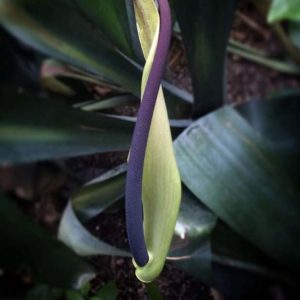
Find Garfield anthurium (Anthurium × garfieldii) in classical birds’ nest form with a long, thin flowering spathe and a spadix in dark maroon. Photo by horticulturist Wade Wheatley.
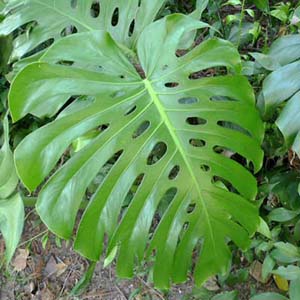
Split leaf philodendron or Swiss cheese plant (Monstera deliciosa) has a vining habit; it is clambering up the side of the greenhouse sporting large, deeply divided leaves.

Its name says it all: Camouflage dumb cane (Dieffenbachia ‘Camouflage’) is hidden west of the palm alleé.

Amorphophallus titanum leaves in the production greenhouses. Find one in the Tropical Greenhouse, too.

